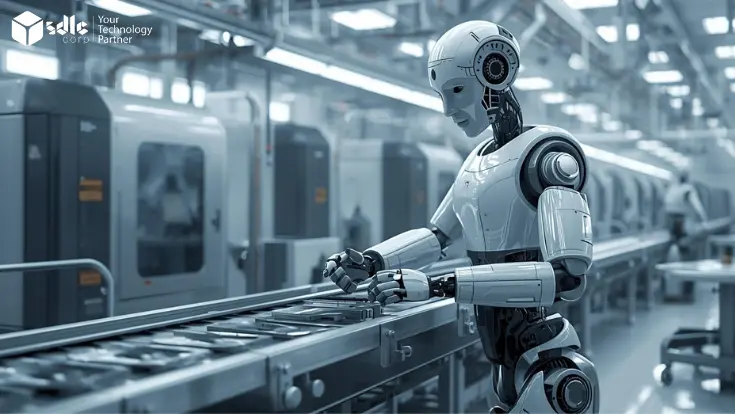Introduction
The release of Hitman 3 in VR, particularly for the Quest 3, has brought a new level of immersion to the popular stealth-based assassination game. With the freedom to step into Agent 47’s shoes in a fully realized 3D world, VR enthusiasts and gamers alike are eager to experience every intricate detail. However, the leap from flat-screen gaming to virtual reality introduces several challenges, particularly when it comes to graphics performance. Optimizing graphics in Hitman 3 VR for the Quest 3 is essential to achieving a seamless and immersive experience, without sacrificing frame rates or visual fidelity.
In this blog, we’ll dive into effective techniques for optimizing the game’s graphics performance on Quest 3, ensuring the best balance between smooth gameplay and stunning visuals. As virtual reality game development continues to evolve, the integration of advanced graphics settings and optimization tools becomes increasingly important. For VR game developers and enthusiasts alike, understanding these techniques is essential in achieving peak performance. Companies specializing in virtual reality game development, such as leading vr game development company and vr game development services, play a key role in delivering high-quality experiences like Hitman 3 VR.
Start your VR game development today!
Our expert team is here to guide you every step of the way.

Understanding the Technical Demands of Hitman 3 VR on Quest 3
Before diving into optimization strategies, it’s important to understand the hardware and software environment of the Quest 3 and how Hitman 3 leverages these capabilities.
The Power of Quest 3
The Quest 3 is Meta’s latest standalone VR headset, boasting an upgraded processor (Snapdragon XR2 Gen 2), increased RAM, and improved graphics rendering capabilities compared to its predecessor, the Quest 2. These hardware upgrades make the Quest 3 an ideal candidate for graphically intensive VR titles like *Hitman 3 VR*. However, even with these improvements, VR games demand careful optimization to prevent performance bottlenecks like frame drops, stuttering, or graphical artifacts.
Challenges in Running Hitman 3 VR on Quest 3
Hitman 3 VR is a massive game, featuring large open environments, detailed character models, and intricate level designs. Translating all of this to VR can strain even the most advanced hardware. In a game where precision and timing are key, especially in stealth gameplay, maintaining a high and stable frame rate is critical for both immersion and player performance. The key optimization areas in Hitman 3 VR for Quest 3 include:
- Frame Rate Stability: Maintaining at least 72 FPS (the default for Quest 3) is essential for smooth gameplay.
- Visual Fidelity: Balancing high-quality textures and models without overloading the system.
- Latency Reduction: Ensuring minimal delay between user input and action on screen.
With these challenges in mind, let’s explore practical ways to optimize Hitman 3 VR performance.
Optimization Strategies for Graphics Performance
1. Adjust In-Game Graphics Settings
Hitman 3 VR offers various in-game settings that can be tweaked to achieve the best performance on Quest 3. These settings allow players to adjust the quality of shadows, textures, anti-aliasing, and more. For Quest 3, it’s essential to strike a balance between high visual quality and smooth gameplay.
- Shadows: Shadows can be one of the most performance-intensive features in VR. Lowering shadow resolution or even disabling dynamic shadows can significantly boost performance while retaining overall visual fidelity.
- Textures: High-resolution textures look great but can bog down the system. Reducing texture resolution to medium can provide a noticeable performance boost without a major impact on gameplay experience.
- Anti-Aliasing: Anti-aliasing smooths out jagged edges in the game, but it can be taxing on the GPU. Lowering or switching to less demanding types of anti-aliasing (such as FXAA) can help maintain a steady frame rate.
2. Leverage Quest 3’s Foveated Rendering
One of the most powerful tools for optimizing VR graphics is **foveated rendering**, a technique where the system only fully renders the part of the scene the player is directly looking at. The Quest 3 supports foveated rendering, allowing developers to reduce the rendering load in peripheral areas without sacrificing the visual quality of the game’s core elements.
By implementing foveated rendering, VR game developers can maintain high frame rates while delivering high-quality visuals directly in the player’s line of sight. Players can enable this feature in the Quest 3’s system settings or through third-party optimization tools. Game developers specializing in vr game development should consider making foveated rendering a standard feature in VR titles.
3. Utilize Asynchronous SpaceWarp (ASW)
Asynchronous SpaceWarp (ASW) is a performance optimization feature supported by Quest 3 that allows the system to maintain a consistent frame rate by generating synthetic frames. ASW kicks in when the system struggles to render new frames fast enough, filling in the gaps with interpolated frames.
For Hitman 3 VR, enabling ASW can help maintain fluid movement and gameplay, even in visually demanding areas. The benefit of ASW is that it allows the system to render at 36 FPS (half the native frame rate) while still delivering a smooth 72 FPS experience to the player.
4. Optimize Resolution for Clarity vs. Performance
In VR, resolution is critical for visual clarity, but it’s also one of the most performance-demanding aspects of rendering. On Quest 3, players can adjust the render resolution to find the optimal balance between crisp visuals and smooth performance.
- Dynamic Resolution Scaling: Some VR titles, including Hitman 3 VR, support dynamic resolution scaling, which automatically adjusts the render resolution based on the system’s performance. Enabling this feature ensures the game maintains high performance, especially during intense action scenes or in large, open areas.
- Manual Resolution Tuning: Players can also manually adjust the resolution settings through the Oculus Debug Tool, allowing for granular control over the graphical output. Lowering the render resolution slightly can dramatically improve performance without significantly impacting visual quality.
5. Texture Streaming Optimization
Hitman 3 VR features vast environments with many objects, textures, and NPCs. Efficient texture streaming ensures that textures are loaded and unloaded smoothly as players move through the game world, preventing stutters or pop-in effects.
By optimizing the game’s texture streaming settings (either through in-game options or Oculus settings), developers and players can ensure that textures load at the right time without overloading system memory. Properly managed texture streaming is especially crucial in fast-paced or resource-heavy sections of the game.
6. Asset Optimization: Reducing Polygon Count
When it comes to VR performance, every polygon counts. In a game like Hitman 3 VR, reducing the polygon count on distant objects, props, and background elements can significantly improve performance without sacrificing visual quality up close. VR game developers often use a technique known as level of detail (LOD to dynamically reduce the complexity of objects as they move farther away from the player.
For Quest 3, optimizing assets in this manner ensures that resources are focused on rendering high-detail objects and characters near the player while reducing the load for elements in the background. This optimization technique is standard practice in vr game development and is crucial for ensuring a smooth, high-fidelity experience.
The Role of Game Engines in VR Optimization
The game engine used in Hitman 3 VR plays a significant role in determining how well the game performs on the Quest 3. IO Interactive, the developer behind the Hitman series, utilizes the Glacier engine. Optimizing the engine settings for VR performance involves several steps:
- Physics Optimization: VR adds additional computational load for physics calculations, particularly in interactive environments like Hitman 3. Reducing the complexity of physics-based interactions where possible can free up resources for rendering and performance.
- Lightmap Baking: Pre-baking static lighting into textures (lightmaps) reduces the real-time computation required for dynamic lighting, which can be particularly taxing in VR environments. Utilizing baked lighting can enhance performance without compromising visual quality.
Our expert team is here to guide you every step of the way.

Conclusion:
Optimizing Hitman 3 VR on the Quest 3 requires a deep understanding of both hardware capabilities and software settings. By carefully adjusting graphics options such as resolution, shadows, textures, and anti-aliasing, and leveraging advanced features like foveated rendering, asynchronous spacewarp, and dynamic resolution scaling, players can enjoy a smoother, more immersive experience.
As the demand for visually rich and immersive virtual reality games continues to grow, the role of experienced game development companies, VR developers, and providers of vr game development services will be essential in delivering cutting-edge experiences. Optimization will always be key, ensuring that even graphically demanding games like Hitman 3 VR can run smoothly on platforms like the Quest 3, offering the best balance of performance and visual quality.
Whether you’re a player looking to enhance your gameplay or a game developer focused on delivering top-tier virtual experiences, mastering optimization techniques is crucial in the evolving world of virtual reality game development.




